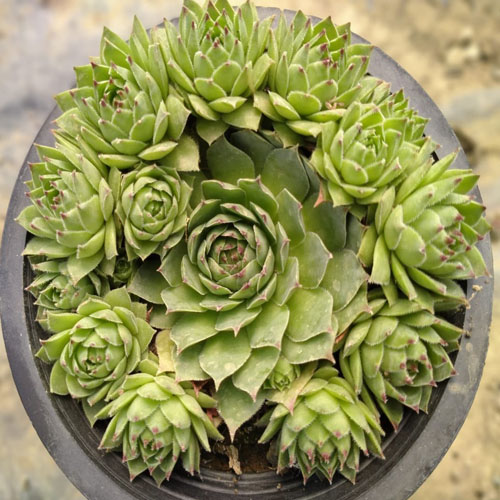Laxmi Kamal
Laxmi Kamal (also known as "Laxmi Lotus" or "Laxmi Plant") is a plant commonly associated with auspiciousness and prosperity in Indian culture. It's often grown for its symbolic significance as well as its ornamental value. Here's a detailed overview:
Description:
- Botanical Name: Kalanchoe pinnata (formerly known as Bryophyllum pinnatum)
- Common Names: Laxmi Kamal, Laxmi Plant, Air Plant, Miracle Leaf
- Appearance: The plant has thick, succulent leaves that are often green but can turn reddish or purplish under certain conditions. It produces small, tubular flowers that can be pink, red, or orange. The plant is typically low-growing and forms rosettes of leaves.
Symbolism:
- Cultural Significance: In Hindu culture, the Laxmi Kamal is associated with the goddess Lakshmi, who represents wealth, prosperity, and good fortune. The plant is often used in religious ceremonies and is believed to bring positive energy and blessings to the home.
Growing Conditions:
- Climate: Laxmi Kamal thrives in tropical and subtropical climates. It prefers warm temperatures and can tolerate a range of conditions, including full sun to partial shade.
- Soil: The plant grows best in well-draining soil. A cactus or succulent mix is ideal, as it helps prevent root rot. It can tolerate poor soil conditions but prefers soil enriched with organic matter.
- Watering: Laxmi Kamal is drought-tolerant and does not require frequent watering. Allow the soil to dry out completely between waterings. Overwatering can lead to root rot, so ensure good drainage.
Cultivation:
- Propagation: The plant is easily propagated from leaf or stem cuttings. Simply take a healthy leaf or stem, let it dry for a few days, and then plant it in well-draining soil. It can also be propagated from offsets or plantlets that form at the edges of the leaves.
- Planting: Plant Laxmi Kamal in a pot with good drainage or in a garden bed with well-draining soil. It can be grown indoors or outdoors, depending on the climate.
- Maintenance: Regularly remove any dead or damaged leaves.


